Spring is here and those animals that haven’t found a mate are seeking one, or two.
On Arpil 5 a Common Snapping Turtle crawled out to dry a bit and perhaps get rid of some of its accumulated algae and parasites before seeking a mate. I had seen three other snappers a few days before but this is the first that I’d seen out basking.
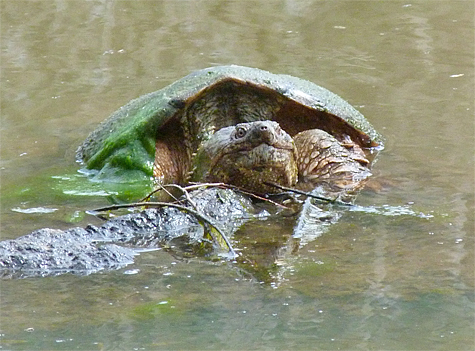
It didn’t take Big Red (a large female Northern Water Snake) very long to hook up with a mate. She was first seen out basking on 5 April. Not having moved from that spot she was seen on April 9 wrapped up with a male.
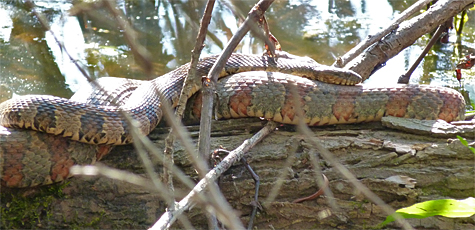
Two days after seeing her with the male pictured above she was with yet another male on the north side of the Wetlands. I can confirm it was her with a different male snake, I saw her swimming along the shoreline in the direction that she was later seen with the other male while at the same time two males were on the willow tree where she was originally observed.
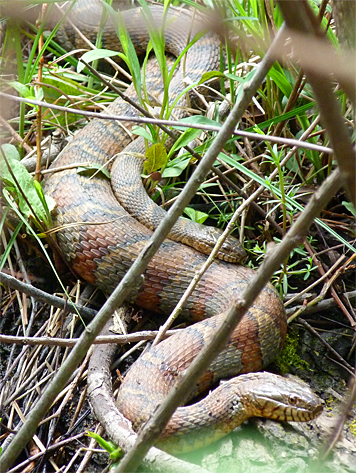
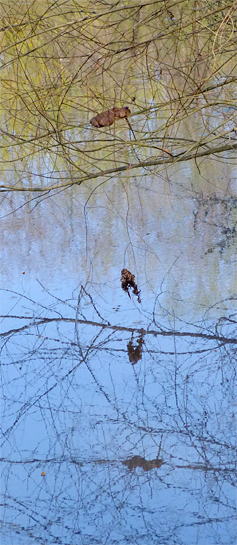
On April 10 another large water snake was seen on the south side of the Wetlands coiled up on a small willow branch about two feet above the water. Seemingly a precarious perch, this allows for a quick escape by plopping off into the water when disturbed, after all, it’s a water snake.
I saw Big Red on her typical perch a little earlier the same day so I think that this is another large female. I could see the tip of the tail so I’m sure that it wasn’t Stumpy, one of our other water snakes with about 8 inches or so of her tail missing. I haven’t, though, seen Big Red on her perch next to the Wetlands main Overlook and this snake on its perch at the seem time so I can’t positively say that it’s not Big Red, but it seems to be a different snake.
Whoever it is, you can see a close shot of this tightroping snake lounging only 20 feet or so from the boardwalk in Explore the Wild.
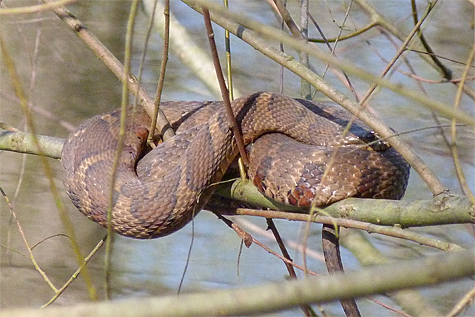
As I rounded the turn leading from Catch the Wind into Explore the Wild I noticed a small mammal clinging to a pine branch several yards in from the path. Just above the mammal was a squirrel’s nest. This was a young squirrel out looking at the world perhaps for the first time on its own.
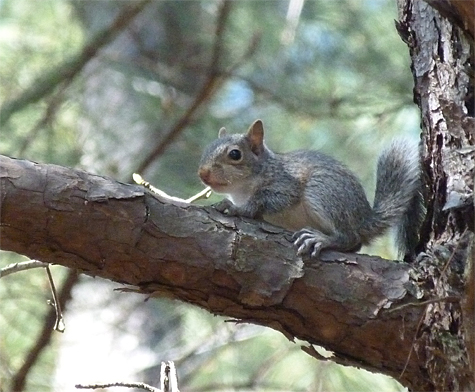
Many of our local resident birds are beginning to start nests, if they’re not already sitting on eggs. The birds are in song throughout the campus and mockingbirds are the kings when it comes to bird song, at least in this part of the country. True, other birds may have beautiful songs, like the thrushes, the oriole, or even the cardinal, but the mockers often incorporate all of their songs, copying the other birds, within its own repertoire of tunes, and then some. Mockers sometimes imitate the sounds of car horns, squeaky gates, police whistles….
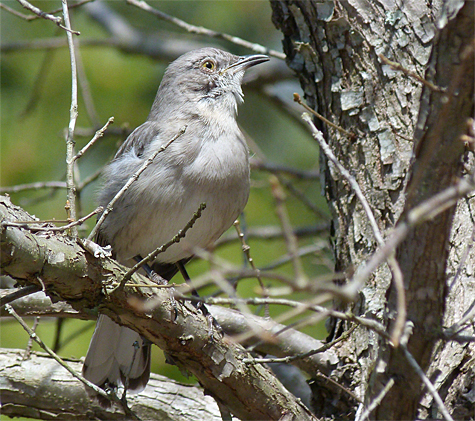

Keeping with the theme of “love in the air,” I spotted for the first time a growth of misteltoe here at the Museum. There are other growths of mistletoe here on our 80 some acre campus but this is the first time that I’ve seen it growing so close to the ground, it’s at eye level. I don’t know how I missed this before but others tell me that they were well aware of this plant, or plants (there’s more than one).
The plant is called American Mistletoe, or Oak Mistletoe. It’s a parasite of hardwood trees and usually grows high up on those trees. One of the most common hosts for mistletoe is Red Maple but other hardwoods are parasitized as well.
The plant produces white berries which is how it spreads from one tree to another. Birds eat the fruit. The seeds go through the bird, exiting through their feces onto the branch of another tree, the bird must defecate on the tree branch and not over the side as often happens. Another way the plant may be spread is through the action of the birds wiping their sticky fruit covered bill on a branch, transferring the seeds to the branch. The seeds stick to the branch and take “root” in the wood of the branch. Cedar Waxwings are probably responsible for many of the mistletoe plants growing in our area.
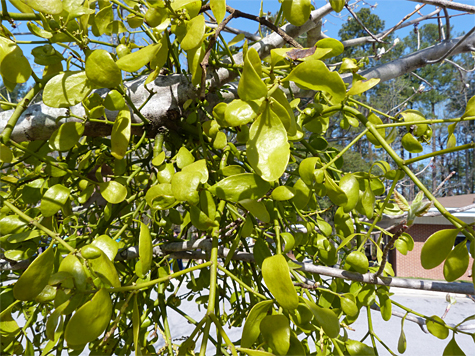
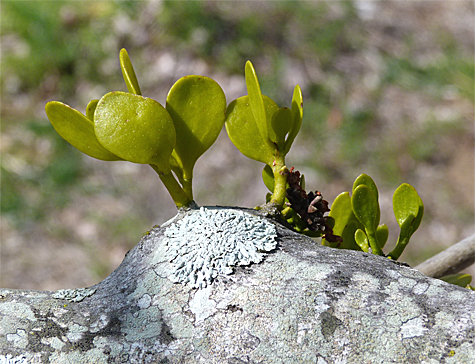
Is the mistletoe harmful to the tree? The plant sucks up nutrients meant for the host tree so it can’t benefit the tree, but most of the mistletoe that I see doesn’t seem to do much damage to the tree that its on, there’s just not enough of it to damage the whole tree. However, the tree pictured is a small tree and it’s hosting three large mistletoes and one sprout, so I’m not sure how it will fare.
Love that snapper grin!
Yes, a grin of amusement at the rest of us more than anything else.
I love seeing the snakes- thanks for pointing them out Greg.
It is good to see the snakes out and about again.